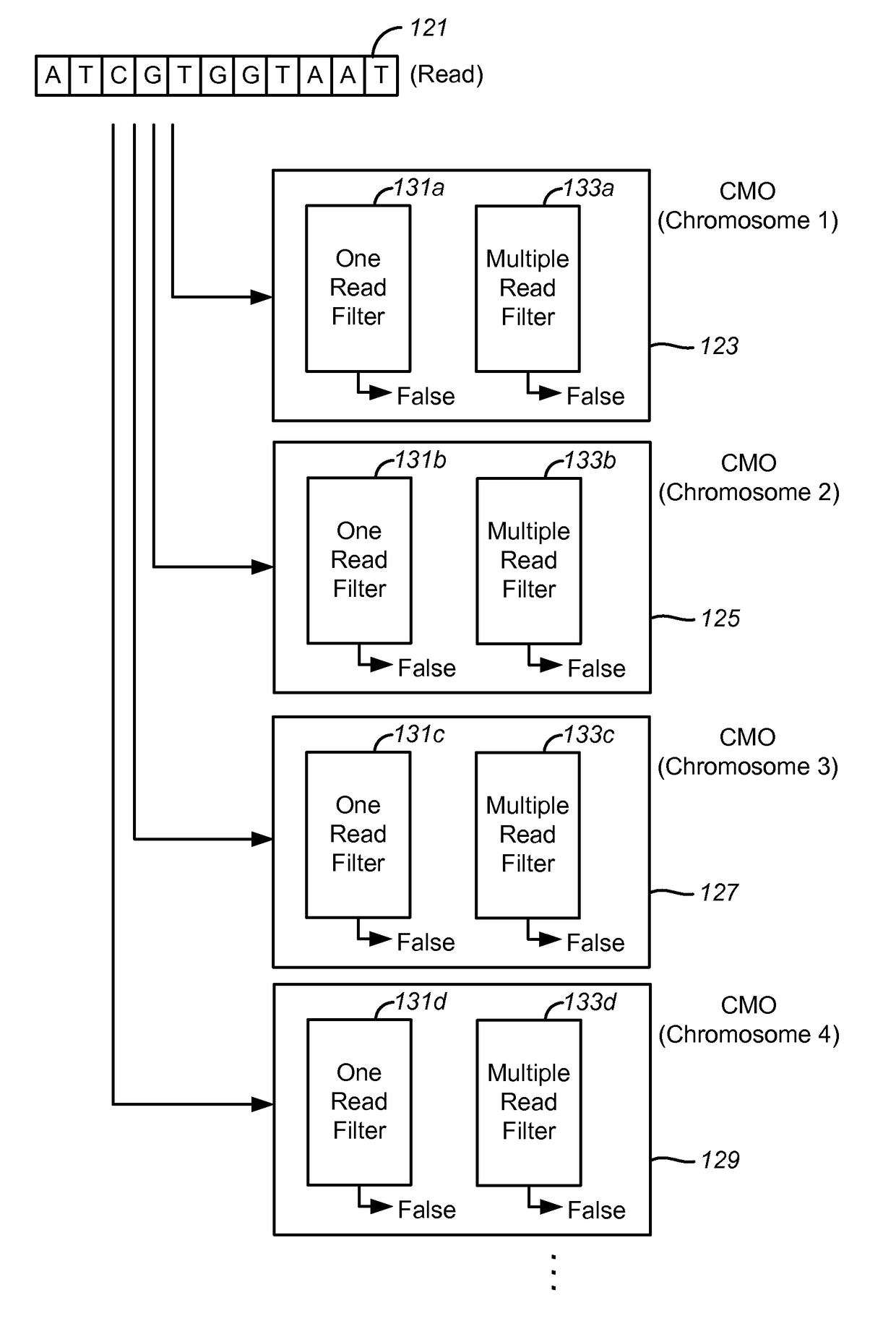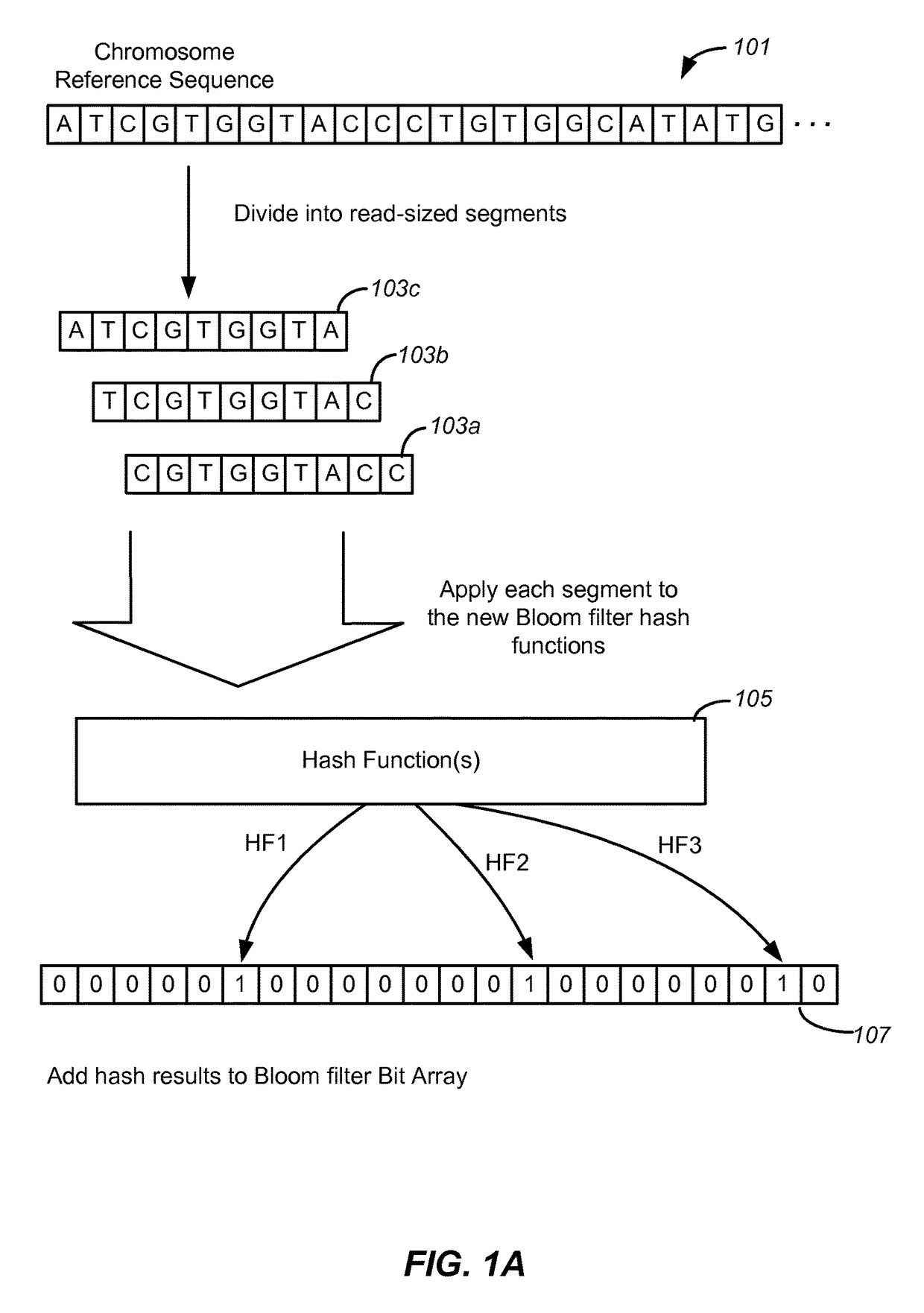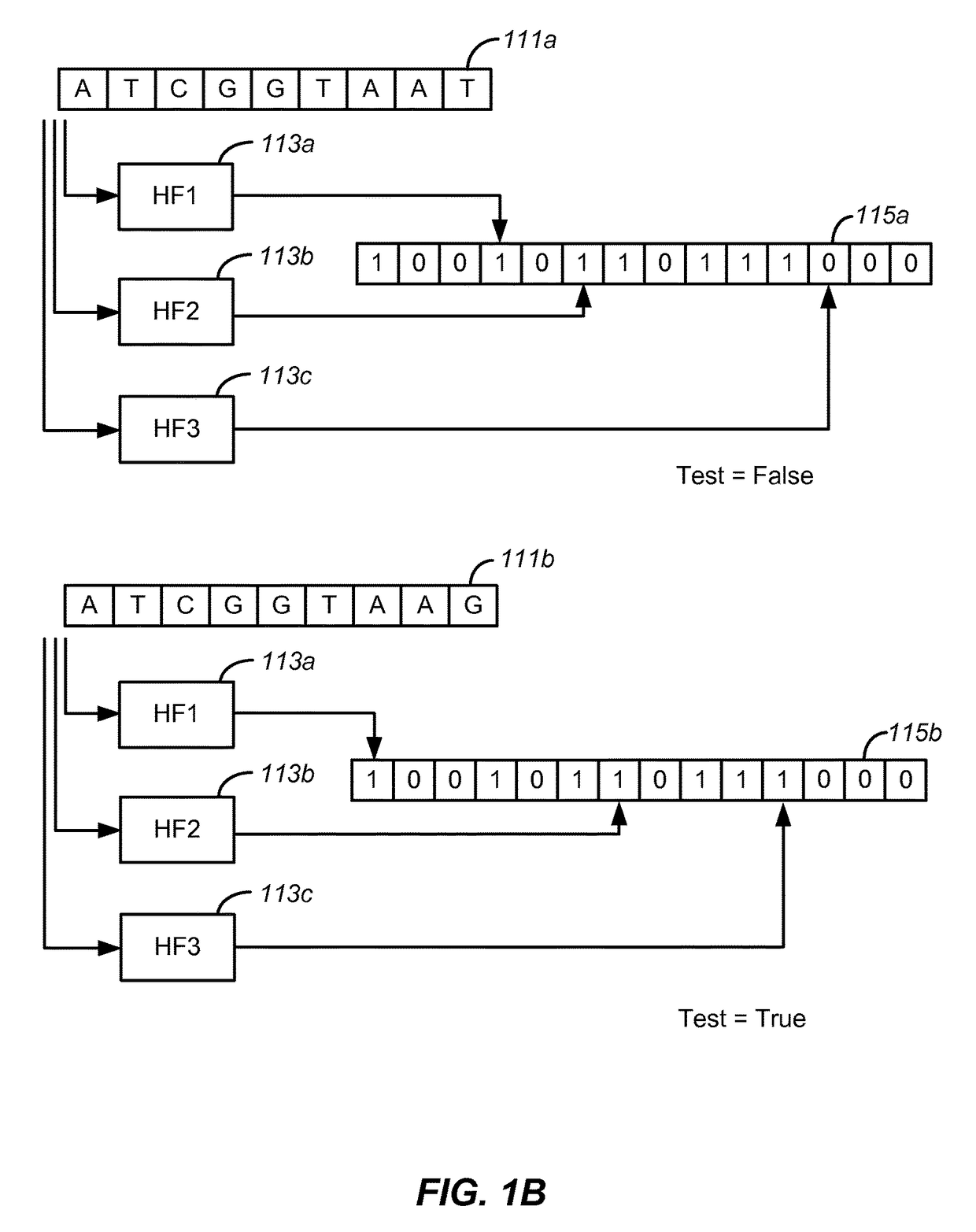Set membership testers for aligning nucleic acid samples
a nucleic acid and membership tester technology, applied in the field of membership testers for aligning nucleic acid samples, can solve the problems of significant bottleneck in characterizing a sample, high repetition of human genome, and complication in alignmen
- Summary
- Abstract
- Description
- Claims
- Application Information
AI Technical Summary
Benefits of technology
Problems solved by technology
Method used
Image
Examples
Embodiment Construction
Definitions
[0022]The following discussion is provided as an aid in understanding certain aspects and advantages of the disclosed embodiments.
[0023]The term “read” refers to a sequence read from a portion of a nucleic acid sample. Typically, though not necessarily, a read represents a short sequence of contiguous base pairs in the sample. The read may be represented symbolically by the base pair sequence (in ATCG or the meta-symbol ‘.’) of the sample portion. It may be stored in a memory device and processed as appropriate to determine whether it matches a reference sequence or meets other criteria. A read may be obtained directly from a sequencing apparatus or indirectly from stored sequence information concerning the sample.
[0024]The term “tag” also refers to short sequences from a nucleic acid sample. Typically, a tag contains a read and associated information for that read such as the location of the sequence in the genome. For some purposes, the terms read and tag are interchang...
PUM
| Property | Measurement | Unit |
|---|---|---|
| diameter | aaaaa | aaaaa |
| read sizes | aaaaa | aaaaa |
| nucleic acid sequence | aaaaa | aaaaa |
Abstract
Description
Claims
Application Information
 Login to View More
Login to View More - R&D
- Intellectual Property
- Life Sciences
- Materials
- Tech Scout
- Unparalleled Data Quality
- Higher Quality Content
- 60% Fewer Hallucinations
Browse by: Latest US Patents, China's latest patents, Technical Efficacy Thesaurus, Application Domain, Technology Topic, Popular Technical Reports.
© 2025 PatSnap. All rights reserved.Legal|Privacy policy|Modern Slavery Act Transparency Statement|Sitemap|About US| Contact US: help@patsnap.com



